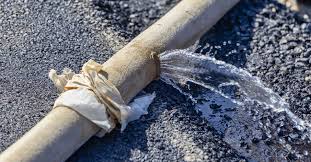A leaky faucet is more than just an annoyance—it can waste gallons of water and increase your utility bills over time. Whether it’s a slow drip or a steady stream, fixing a leaky faucet is a manageable DIY project that can save you money and prevent further damage. In this guide, we’ll walk you through the steps to identify the type of faucet you have, gather the necessary tools, and repair the leak efficiently.Before you begin, it’s important to understand the common causes of a leaky faucet. Most leaks occur due to worn-out washers, O-rings, or seals. Corrosion and mineral buildup can also contribute to the problem. Identifying the root cause will help you choose the right repair method.
- Turn Off the Water Supply: Locate the shut-off valves under the sink and turn them clockwise to stop the water flow. If there are no individual valves, you may need to shut off the main water supply.
- Plug the Drain: Place a cloth or stopper in the sink to prevent small parts from falling down the drain.
- Disassemble the Faucet: Use a screwdriver or Allen wrench to remove the handle. Carefully take apart the faucet to expose the inner components.
- Inspect the Parts: Check the washer, O-ring, and valve seat for wear or damage. Replace any faulty parts with new ones from a hardware store.
- Reassemble the Faucet: Put the faucet back together in reverse order, ensuring all components are properly aligned.
- Test the Faucet: Turn the water supply back on and check for leaks. If the drip persists, you may need to repeat the process or consult a professional.
For different types of faucets, the repair process may vary slightly. Here’s a quick overview of the most common faucet types and their specific repair needs:
- Compression Faucets: These often leak due to worn-out washers. Replacing the washer is usually the solution.
- Cartridge Faucets: Leaks are typically caused by a damaged cartridge. Replacing the entire cartridge is recommended.
- Ball Faucets: These require replacing the springs and seals inside the rotating ball mechanism.
- Ceramic Disk Faucets: These are durable but may leak if the ceramic disks are cracked or misaligned.
Preventing future leaks is just as important as fixing the current one. Regularly cleaning your faucet and checking for signs of wear can extend its lifespan. Additionally, installing a water softener can reduce mineral buildup, which is a common cause of leaks in areas with hard water.If you’re unsure about any step or the leak persists after your repair attempts, don’t hesitate to call a licensed plumber. Some issues, like a corroded valve seat or hidden pipe damage, may require professional attention.By following this guide, you can tackle a leaky faucet with confidence and enjoy the satisfaction of a job well done. Not only will you save water, but you’ll also gain valuable DIY skills for future home maintenance projects.

